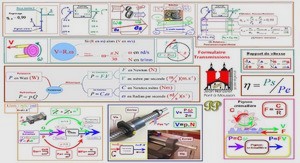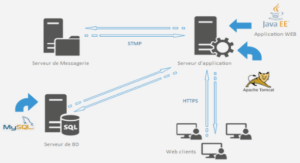Extrait du Course composite materials composite manufacturing techniques
Introduction
Composite materials are made by combining two or more materials to give a unique combination of properties. Many common materials are indeed “com-posites,” including wood, concrete, and metals alloys. However, fiber-reinforced composite materials differ from these common materials in that the constituent materials of the composite (eg the two or more phases) aremacroscopically distin-guishable and eventually mechanically separable. In other words, the constituent materials work together but remain essentially in their original bulk form (apart from the thin hybrid interface between the phases).The main component of a composite is the matrix material. The reinforcement (qv) can be fibers, particulates, or whiskers. The fibers can be continuous, long, or short. In advanced composites, the fibers (ie the reinforcing phase) are present as unidirectional strands or woven fabric and provide strength and stiffness to the composite. Thematrix acts as a load transfermedium assuring rigidity and protects the fibers and the whole composite fromenvironmental attack. Short chopped fibers and mat are used in nonstructural polymer matrix composites. In these cases the fibers provide comparatively less strength and stiffness to the composite.
Composite Manufacturing Techniques
Composite parts are made using either thermoset or thermoplastic resins with some form of reinforcements. Techniques for manufacturing polymer matrix composites are covered in Composites, Fabrication (qv). Filament winding and robotic winding are used for making pipes and tanks. Pultrusion is used for low cost high volume productions. Autoclave processing is used when high quality panels and structures sometimes having complex shapes are required. RTM is used extensively tomake small and large complex structural parts in a cost-effectivemanner using low cost tooling. Compression molding processes are widely used in the au tomotive industry for high volume production capabilities and injection molding (qv) is adopted when the production rate is a critical issue, mainly for consumer and automotive applications.
Filament winding consists of drawing resin-impregnated fibers that are wound over a mandrel. Winding patterns are decided at the design stage depending on the desired properties of the product. The winding process of a high quality pressure vessel is shown in Fig. 1.
Process Modeling
During the fabrication process (eg RTM, autoclave, filament winding) a combination of pressure–temperature steps are applied with given histories in order to assure well-consolidated parts with minimum defects. The solidification or curing process involves a number of physical, chemical, and mechanical phenomena in the composite materials. Generally speaking, the formation of a structure due to cross-linking reactions or to the melting and consolidation of thermoplastic polymers is the macroscopic effect of heat and pressure inputs: in real terms continuous changes in degree of cure or crystallinity, gelation (the formation of an infinite polymer network as a consequence of chemical reaction) and vitrification (the passage from a molten/rubbery to a glassy state) occur. As a consequence..
Cure Kinetics and Glass-Transition Model
As stated above, during the cure, at each level of conversion, a thermosetting material could be assimilated to a completely new material with specific thermomechanical properties. Then, the possibility of following with a monitoring variable the level of conversion reached by the system during the manufacturing process represents an important issue.
……..
Course composite materials composite manufacturing techniques (686 KO) (Cours PDF)




